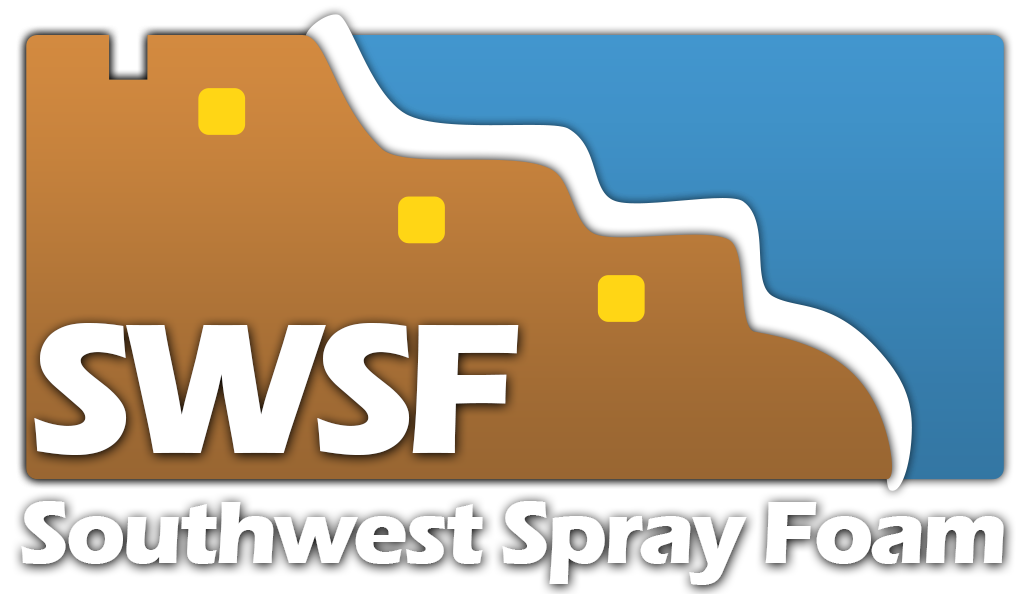By Jessica A. Baris
Michelangelo is famed for painstakingly carving and shaping marble into grand sculptures, such as “David.” Michelangelo may be long gone, but the art of shaping and carving is still useful today, and it’s something that Matt Segura, spray foam contractor in Santa Fe, New Mexico, practices to produce the product his customers want.
Spray polyurethane foam (SPF) is popular among homeowners in Santa Fe for two reasons: It provides excellent insulation, and it’s able to preserve the old hacienda look that so many want for their homes.
“With SPF, we can shape it and mimic the same movement that the walls have prior to insulation,” says Segura of Southwest Spray Foam. “We achieve the insulation value as well as maintain that adobe look that homeowners want.”
Adobe, says Segura, is “unique to Santa Fe. You don’t see people building with adobe anywhere else.”
In fact, SPF application to adobe is unique, too. Just in the past year, an International Code Council Evaluation Services (ICC-ES) report was released, approving the use of spray foam on exterior adobe walls with a three-coat stucco on top. Segura is finding that more homeowners are choosing SPF for their homes, and he’s getting business left and right.
One particular homeowner in northeast Santa Fe was on a mission to bring to fruition a custom adobe home with SPF to insulate it. He hired Anderson and Associates to build it, and Southwest Spray Foam was contracted to apply the spray foam insulation. The Southwest Spray Foam crew’s spray skills—and their carving and shaping skills—would soon be on demand.
The Artist’s Touch
It happened over four days in August. Segura and his seven-man crew prepared to apply foam to the 7,000 square feet of adobe walls and rooftop by covering windows, doors, landscaping, and yard walls with 4-mil plastic.
“Luckily, the job site was out in the country, so we didn’t have a whole lot to worry about protecting,” says Segura.
Segura is quite familiar with the adobe homes, having grown up in Santa Fe. When they arrived on site, the crew cleared the roof and walls of loose dirt. Equipped with full-body protective suits, respirators, gloves, and foot protection, the applicators and helpers fired up their Graco H-20/35, Graco Reactor H-40, and GX-7 spray guns to begin foaming.
The exterior walls—which are made of stacked adobe with cement mortar joints between—were sprayed with approximately 2 inches of NCFI’s InsulStar closed-cell foam.
Once the foam cured, eight crewmen helped to smooth out the foam using knives and blades as their shaping tools to form the round walls the owner had specified.
“We did some shaping with the house because it’s a square house,” says Segura. “We wanted to make it more round, so we shaped the foam.”
Up Next, the Roof!
Even after every last bit of square shape was smoothed down to soft flowing curves for the home’s exterior, the crew still had one part of the house left to go—the roof.
“This owner has done a lot of research,” says Segura. “He had an SPF roof in the past. He wanted the best insulation he could get. The foam provides slope, R-value, and the roof, all in one shot, which you cannot do with conventional roofing.
“SPF is popular in Santa Fe because a lot of homes have exposed ceilings and don’t have manufactured tresses on the roofs. They use wood vigas and wood beams as the supports for the roof. The decking goes on top of that, and the foam is sprayed directly on top of the decking.”
The crew sprayed the roof’s tongue-and-groove decking with NCFI’s 2.8-pound foam.
“We sprayed a minimum of 6 inches to create drainage and slope,” says Segura. “We achieved an R-value of 38.4. That meets the local building code.”
Atop the roof foam went NCFI’s Endurarock roof coating system. “The coating on the edges is a minimum of 40 mils. It required gravel covering on the horizontal surfaces and UV coating on vertical surfaces,” explains Segura. “The gravel is approximately 1.5 inches thick, and it’s ¾ Santa Fe brown gravel from a local Santa Fe gravel pit.”
Michelangelos or SPF Pros?
“It takes time,” says Segura of the whole process. “We had about two full days of spraying and one full day of trimming and shaping.”
But it’s worth the time. Segura said that he and co-owner Aaron Lewis, the applicator on this job, care most about delivering exactly what the customer wants. Lewis has been spraying foam for more than 30 years. He knows foam, and he knows how to build strong business relationships.
“Aaron works hand-in-hand with the contractors and the homeowner,” says Segura. “He really listens to what they want. He’s hands-on, which is key to our success. He’s not behind the desk. He gets out and sprays.”
The Southwest Spray Foam crewmen may not be Michelangelos, but they sure are SPF pros who know how to work foam with an artistic touch!
Source: (Link No Longer Available) Please See Sprayfoam Magazine for information.
